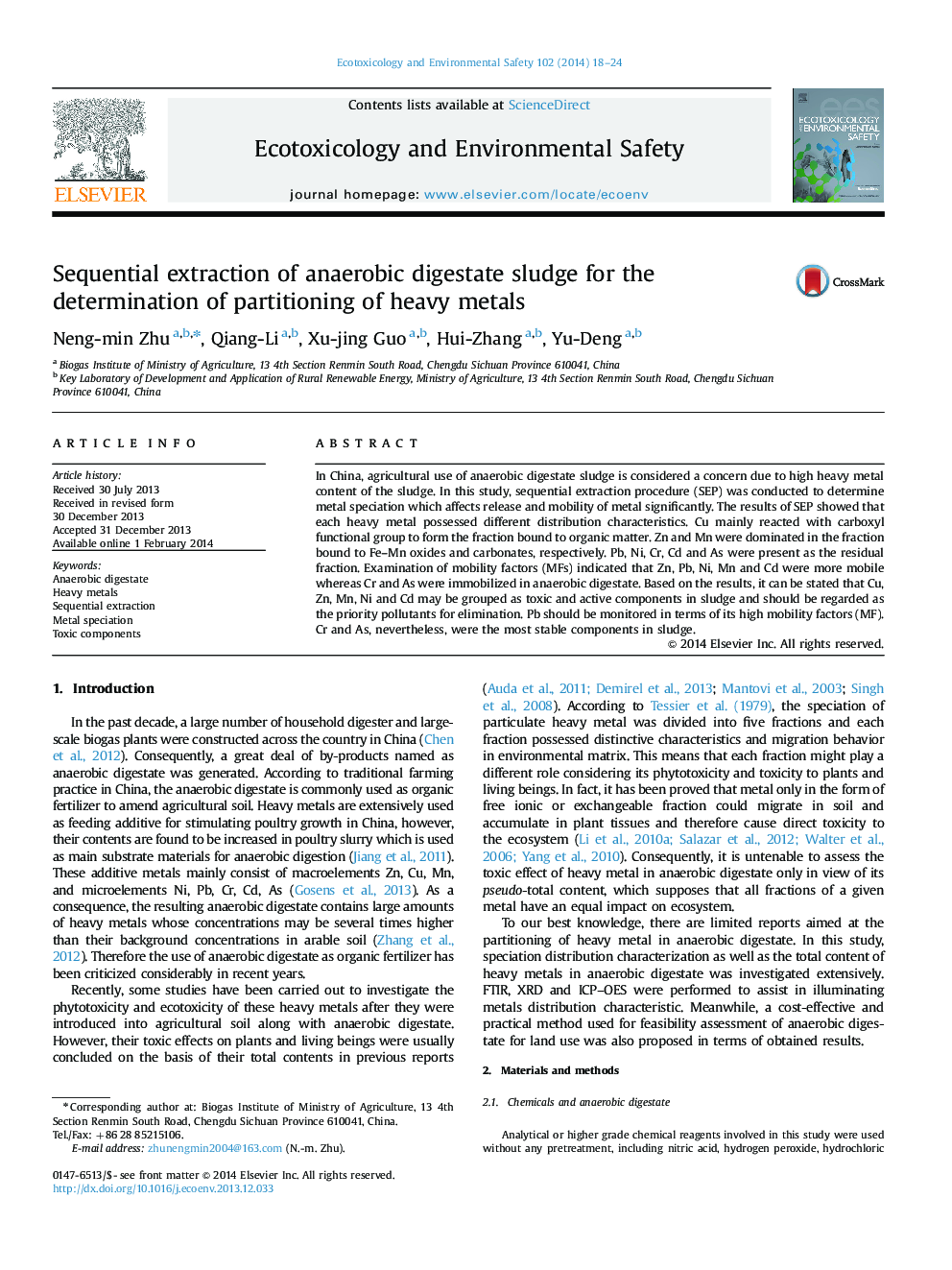| کد مقاله | کد نشریه | سال انتشار | مقاله انگلیسی | نسخه تمام متن |
|---|---|---|---|---|
| 6312176 | 1618961 | 2014 | 7 صفحه PDF | دانلود رایگان |
- Cu mainly associated with the fraction bound to the organic matter.
- Metal species with large proportion of effective fractions should be removed.
- Effective concentration (F1+F2+F3+F4+F5) can substitute for total concentration for risk assessment.
- Distribution of metal speciation should be paid special attention to.
In China, agricultural use of anaerobic digestate sludge is considered a concern due to high heavy metal content of the sludge. In this study, sequential extraction procedure (SEP) was conducted to determine metal speciation which affects release and mobility of metal significantly. The results of SEP showed that each heavy metal possessed different distribution characteristics. Cu mainly reacted with carboxyl functional group to form the fraction bound to organic matter. Zn and Mn were dominated in the fraction bound to Fe-Mn oxides and carbonates, respectively. Pb, Ni, Cr, Cd and As were present as the residual fraction. Examination of mobility factors (MFs) indicated that Zn, Pb, Ni, Mn and Cd were more mobile whereas Cr and As were immobilized in anaerobic digestate. Based on the results, it can be stated that Cu, Zn, Mn, Ni and Cd may be grouped as toxic and active components in sludge and should be regarded as the priority pollutants for elimination. Pb should be monitored in terms of its high mobility factors (MF). Cr and As, nevertheless, were the most stable components in sludge.
Journal: Ecotoxicology and Environmental Safety - Volume 102, April 2014, Pages 18-24
